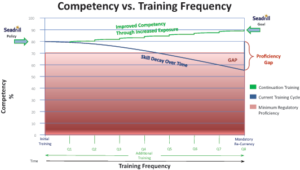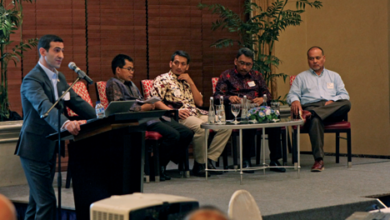HSE&T Corner – Seadrill sets out on path to continous well control certification
By Dave Gouldin, Seadrill

The events of 20 April 2010 brought home the potential consequences when offshore exploration drilling goes wrong. A repeat of Macondo cannot be allowed to happen.
“Findings and Conclusions of Law, Phase One Trial,” released by the US District Court for the Eastern District of Louisiana on 4 September 2014, highlighted numerous failings of the operator, drilling contractor and service providers. Some of the most salient points refer to drill crews.
Although much has been said and written about the need for improved well control training, not a lot has changed.
The International Association of Oil & Gas Producers (IOGP) report 476 outlined methodology for improving the training and certification environment. Subsequent reports 501 and 502 defined non-technical skills training revolving around human factors and crew resource management.
Seadrill decided to take somewhat radical action to significantly improve both the technical knowledge and competence of its drilling crews.
The approach introduced six measures that, when combined, would dramatically improve overall well control competence:
1. Continuous training process with verification;
2. Elevated pass-level thresholds;
3. Well control training simulators permanently installed across the fleet;
4. Improved mathematics skills with e-learning;
5. Enhanced certification with human factors;
6. Highest-quality training provider.
Current certification requires renewal every two years. Historically, knowledge retention has been low, necessitating “refresher” training, frequently focused on passing the test. Training is generally generic and based on dated technology. Seadrill-specific training was introduced based on sixth-generation standards and has more emphasis on adaptive kill methods, such as volumetric and bullheading.
Elevated pass levels, regardless of IWCF or IADC testing, were introduced. First-time attendees at levels 3 or 4 must achieve a minimum 80%. Subsequent attendance at the same level requires 90% or greater. Current attendees are achieving greater than 90% compliance at the first attempt.
These thresholds are a requirement for promotion: assistant driller to driller, driller to toolpusher, and toolpusher to drilling section leader. Additionally, these pass levels are a prerequisite to attend enhanced well control courses.
Further, Seadrill installed Check-6’s Well Control Virtual Instructor on all units at the end of 2014. The system allows for multiple users and logs training performance in a central database, allowing for continuous overview of each candidate’s competence level. Since installation, data has been collected on more than 600 individuals.
Lack of basic mathematics skills has historically hindered well control learning and understanding. Three well control-related e-learning modules were developed to assist candidates. Completion is mandatory before attending well control school.
Seadrill and its industry partners have developed and introduced the seven-day Enhanced Training and Certification courses. Level 4 written tests are taken on the opening morning. Complex team-based well control scenarios are undertaken on the DrillSim 6000s with human factor/crew resource management training an integral part of the course.
To date, 90-plus candidates have attended, with 95% success rate (score above 80%). In the most recent course, from September 2016, the group achieved 100% level 4 pass rate on first morning with an average score above 90%.
Prior to 2014, Seadrill was using 27 training providers worldwide and getting mixed results. We have entered into a global partnership with Maersk Training to supply more consistent and sustainable well control training. We’re already starting to reap the benefits. By having the most comprehensive well control training in the industry, we’re better-positioned that our crews have received the best training in the industry. DC
This article is based on a presentation at the 2016 IADC Well Control Europe Conference, 19-20 October, Copenhagen.
Click here to read the Phase One Trial document issued in September 2014.




